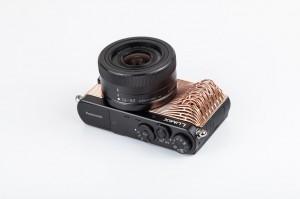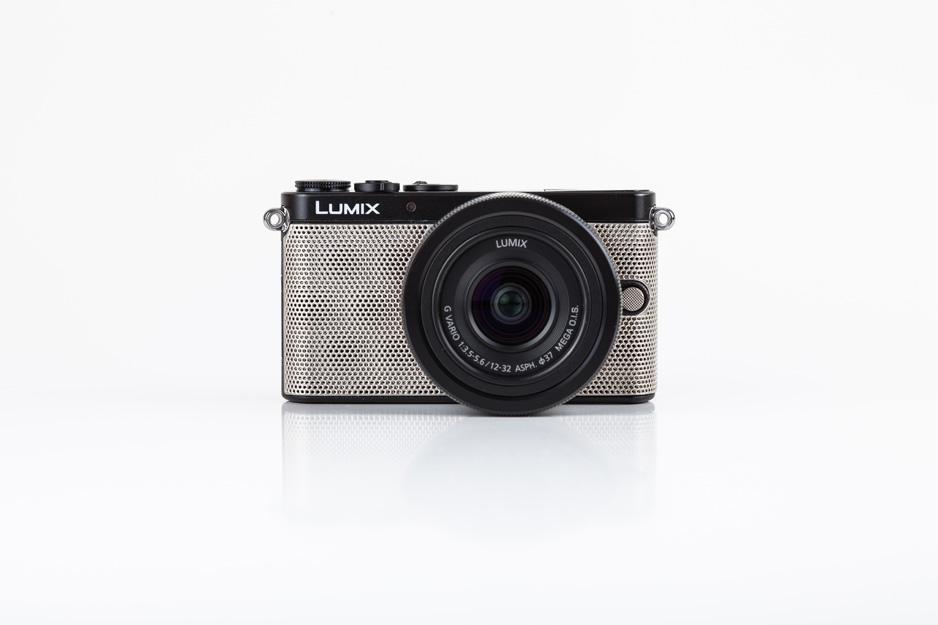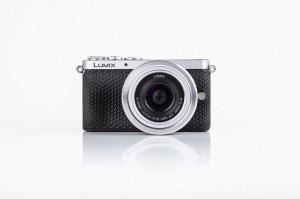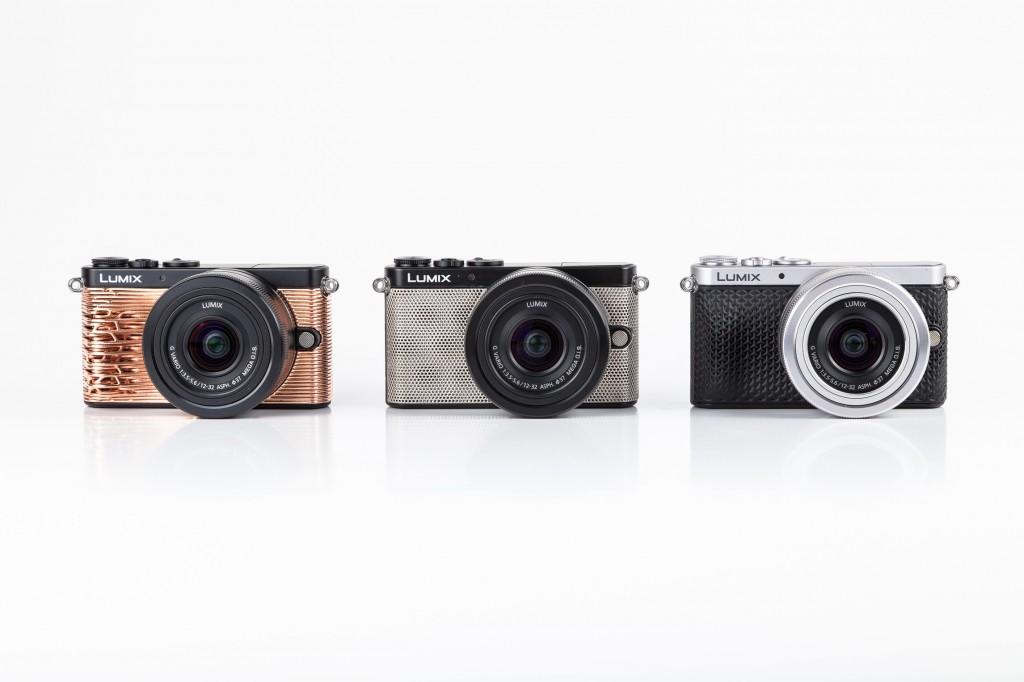Everyone wants to be different. We live in an age when personalization is a commodity in and of itself. The history of Western design is a largely uninterrupted narrative about efforts to differentiate between groups through aesthetics. In the world of photography, it was at one point simply enough to have the camera in order to ensure that everyone understood you were a photographer. As cameras became more ubiquitous and then, with the introduction of digital photography nearly impossible to avoid, everyone is a photographer and those serious about the art have tried a variety of tactics to distinguish themselves from the ‘mere’ hobbyist.
First, cameras got smaller and smaller and now they are getting bigger and bigger. As quality gets higher, lomography becomes the darling of the artistic photography world. Having a neckstrap for your camera that identifies it as a low number Canon, for example, is another way to advertise your commitment (and budget).
 Whatever your level of interest and engagement with photography, the Panasonic Lumix can now be a backdrop for your expression of self in a way that other cameras have not yet been. Last week at the Photokina Fair in Germany, Panasonic introduced a series of three 3D printed covers that can be applied to the camera. Panasonic’s Marketing Manager, Sebastian Drawert, said of the innovation:
Whatever your level of interest and engagement with photography, the Panasonic Lumix can now be a backdrop for your expression of self in a way that other cameras have not yet been. Last week at the Photokina Fair in Germany, Panasonic introduced a series of three 3D printed covers that can be applied to the camera. Panasonic’s Marketing Manager, Sebastian Drawert, said of the innovation:
“The idea of using 3D Printing in customization of Lumix digital still cameras is something we’ve been watching closely. It takes know-how and expertise to make it work, but the series we presented at Photokina really evoked the craving we had in mind.”
The covers were created in conjunction with the design studio WertelOberfell and Materialise. The concept that emerged from their collaboration was to create a series of covers representing epochs in design history. The three epochs chosen were the Art Nouveau, Modernism, and the Digital Age. Designer Jan Wertel of WertelOberfell explained:
“We looked at Art Nouveau, Modernism, and Digitalism and we wanted to push the technological boundaries of 3D Printing in terms of intricate details and material thicknesses – or rather thinness. Together with the engineers from Materialise, we realized very fine, yet strong structures with different kinds of finishes.”
 The Art Nouveau camera has a copper front that wraps smoothly on one side of the lens and then bulges forward towards the right hand side as if composed of a series of growing wires. The Digitalism cover has the honeycomb pattern that anyone accustomed to car speakers will immediately recognize. Its gunmetal gray front is interrupted by a series of piercings that make the front almost vibrate as the eye tries to focus. While the Digitalism cover has a completely smooth front, the right hand hold, made by the swelling front of the Art Nouveau cover, makes it’s appearance again in the cover designed for the Modern epoch. A black cover with a woven look somewhere between tire treads and fish spines finishes the tell tale Modern aesthetic.
The Art Nouveau camera has a copper front that wraps smoothly on one side of the lens and then bulges forward towards the right hand side as if composed of a series of growing wires. The Digitalism cover has the honeycomb pattern that anyone accustomed to car speakers will immediately recognize. Its gunmetal gray front is interrupted by a series of piercings that make the front almost vibrate as the eye tries to focus. While the Digitalism cover has a completely smooth front, the right hand hold, made by the swelling front of the Art Nouveau cover, makes it’s appearance again in the cover designed for the Modern epoch. A black cover with a woven look somewhere between tire treads and fish spines finishes the tell tale Modern aesthetic.
 Materialise’s high resolution printers were an important tool to be able to create the level of detail required for the intricacy of the designs to be expressed. This is not the first time that WertelOberfell has worked with Materialise, but instead has enjoyed an ongoing relationship. The Director of the Factory for 3D Printing, Jurgen Laudus, expressed his enthusiasm for the continuing relationship between design and 3D printing:
Materialise’s high resolution printers were an important tool to be able to create the level of detail required for the intricacy of the designs to be expressed. This is not the first time that WertelOberfell has worked with Materialise, but instead has enjoyed an ongoing relationship. The Director of the Factory for 3D Printing, Jurgen Laudus, expressed his enthusiasm for the continuing relationship between design and 3D printing:
“3D printing has introduced a new way of thinking about design and manufacturing. It’s been exciting to work with Panasonic and WertelOberfell to fully explore the freedom of design and the benefit of a possible cost-effective small-series production. It clearly turned out to be the ideal technology for the custom LUMIX parts we’ve created.”
The introduction of a way to personalize individual cameras was the logical next step. After all, now that anybody can own a camera…how are you going to let the world know who you really are? Let’s hear your thoughts on Panasonics new cameras, in the 3D printed camera cover forum thread on 3DPB.com.
Subscribe to Our Email Newsletter
Stay up-to-date on all the latest news from the 3D printing industry and receive information and offers from third party vendors.
You May Also Like
Profiling a Construction 3D Printing Pioneer: US Army Corps of Engineers’ Megan Kreiger
The world of construction 3D printing is still so new that the true experts can probably be counted on two hands. Among them is Megan Kreiger, Portfolio Manager of Additive...
US Army Corps of Engineers Taps Lincoln Electric & Eaton for Largest 3D Printed US Civil Works Part
The Soo Locks sit on the US-Canadian border, enabling maritime travel between Lake Superior and Lake Huron, from which ships can reach the rest of the Great Lakes. Crafts carrying...
Construction 3D Printing CEO Reflects on Being Female in Construction
Natalie Wadley, CEO of ChangeMaker3D, could hear the words of her daughter sitting next to her resounding in her head. “Mum, MUM, you’ve won!” Wadley had just won the prestigious...
1Print to Commercialize 3D Printed Coastal Resilience Solutions
1Print, a company that specializes in deploying additive construction (AC) for infrastructure projects, has entered an agreement with the University of Miami (UM) to accelerate commercialization of the SEAHIVE shoreline...































